45 results
Environment Common Core RST.6-8.4 research

Earth's Natural Resources Research Project
A research project for students to research and gain a deeper understanding of natural resources and the current problems facing the world. Includes requirements, sample project ideas, and brainstorming topics.Standard:(iii) Energy resources are available on a renewable, nonrenewable, or indefinite basis. Understanding the origins and uses of these resources enables informed decision making. Students should consider the ethical/social issues surrounding Earth's natural energy resources, while lo
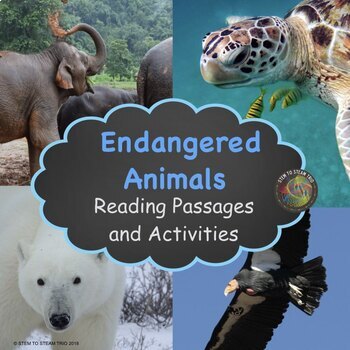
Endangered Animals Nonfiction Texts for Reading Comprehension and Activities
This resource contains five non-fiction texts about endangered animals. It was made for the MS-LS2-4 and 5 Ecosystems: Interactions, Energy, and Dynamics NGSS. It covers the following endangered animal species:African ElephantCalifornia CondorPolar BearRusty Patched BumblebeeSea TurtleThere are graphic organizers to fill in as the students are reading. There is a link to a video, as well as a couple of other suggestions!❤️Click Here to Follow Us!Related Resources⭐ Endangered Plants: NGSS: MS-LS
Grades:
6th - 8th
CCSS:
NGSS:
MS-LS2-5
, MS-LS2-4
Also included in: Science Sub Plans Endangered and Invasive Species Bundle MS-LS2-4 and 5
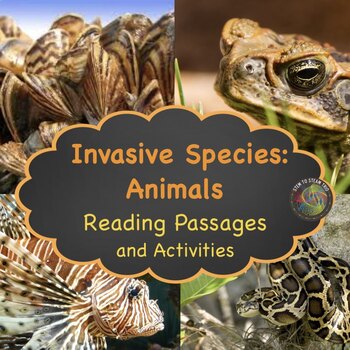
Invasive Species Nonfiction Texts for Reading Comprehension & Activities
This resource contains five non-fiction texts about animals that are considered invasive species. It was made for the MS-LS2-4 and 5 Ecosystems: Interactions, Energy, and Dynamics NGSS. It covers the following invasive species:Burmese PythonCane ToadEmerald Ash BorerLionfishZebra MusselThere are graphic organizers to fill in as the students are reading.❤️Click Here to Follow Us!Related Resources⭐ Invasive Plant Species: NGSS: MS-LS2-4 and MS-LS2-5⭐ Invasive Species - Animals NGSS: MS-LS2-4 and
Grades:
6th - 8th
CCSS:
NGSS:
MS-LS2-5
, MS-LS2-4
Also included in: Science Sub Plans Endangered and Invasive Species Bundle MS-LS2-4 and 5
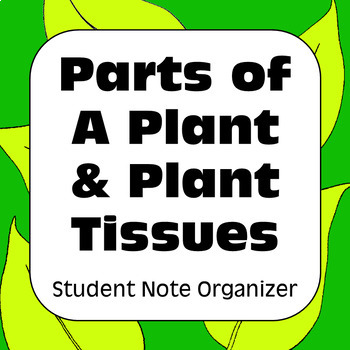
Parts of a Plant & Plant Tissue Types: Student Note Organizer
Comprehensive note organizer for students to use as they research and learn about the different parts of a plant and plant tissues. *Now a fillable pdf document.Extremely beneficial when conducting online research! These sheets will help consolidate the wealth of information in an organized, easy to visualize, format.Completed chart may be taped together to form a wall chart of plant parts, from shoot to root.The four types of plant tissue (meristematic, dermal, ground, and vascular) and the p
Subjects:
Grades:
6th - 11th
CCSS:
NGSS:
HS-LS1-2
Also included in: Ecology, Environmental Studies, and Earth Science Activities Bundle

Invasive Species Reading Comprehension Passages
This resource contains five non-fiction texts about plants that are considered invasive species. It was made for the MS-LS2-4 and 5 Ecosystems: Interactions, Energy, and Dynamics NGSS. It covers the following invasive species:Japanese HoneysuckleKudzuNorway MaplePurple LoosestrifeWater HyacinthThere are graphic organizers to fill in as the students are reading. There is a link to a video, as well as a couple of other suggestions!❤️Click Here to Follow Us!Related Resources⭐ Invasive Animal Specie
Grades:
6th - 8th
CCSS:
NGSS:
MS-LS2-5
, MS-LS2-4
Also included in: Science Sub Plans Endangered and Invasive Species Bundle MS-LS2-4 and 5
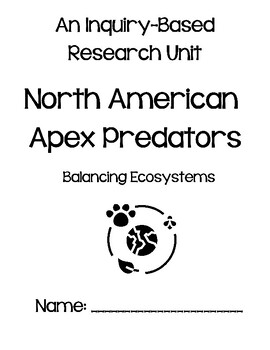
Apex Predators: Balancing Ecosystems. An inquiry-based science project
Critical thinking skills and inquiry-based science questioning are built in to this unit designed for middle school students. The printable unit guides students in learning how apex predators are vital to balanced ecosystems, and why. Students, either on their own or in groups, learn about what apex predators are, how they look in different types of ecosystems, and why they are critical to the success of ecosystems. This unit includes vocabulary, research methods, organization skills using C
Subjects:
Grades:
6th - 8th
NGSS:
MS-LS2-3
, MS-LS2-4
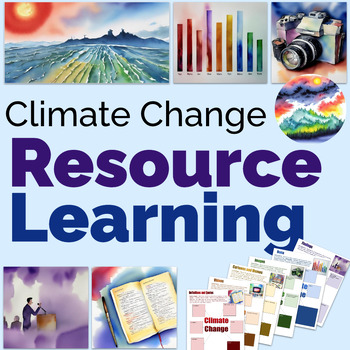
Creative Webs: Interactive Climate Change Exploration Assignment
Overview: "Creative Webs" is an engaging classroom assignment designed to empower students with a dynamic electronic learning experience focused on climate change. This colorful and interactive assignment allows students to collaborate in groups or work independently as they delve into the world of climate change using the resource-based learning approach. Students are tasked with researching climate change in five distinct contexts, with each context requiring them to discover and evaluate inf
Subjects:
Grades:
6th - 9th
Types:
CCSS:
NGSS:
MS-ESS3-5
, HS-ESS3-1
, MS-ESS3-4
, HS-ESS3-5
, HS-ESS3-6
...
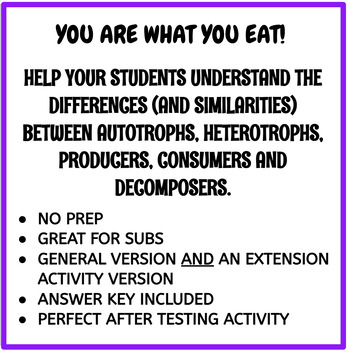
WHAT DO YOU EAT?: AUTOTROPHS, PRODUCERS, CONSUMERS, HETEROTROPHS AND DECOMPOSERS
NO PREP!GREAT FOR SUBS!GREAT FOR REVIEW!TWO VERSIONS - THE BASIC VERSION AND AN EXTENSION ACTIVITY VERSIONPERFECT FOR A QUIET ACTIVITY AFTER TESTING!Help your students understand the similarities and differences between autotrophs and producers and heterotrophs, consumers and decomposers. I made this in response to students struggling to make these connections and I wanted them to be able to explain their reasoning. The students loved this activity and learning about the different organisms and

Ecosystem Populations
Do you want to teach your middle school students about Ecosystem Populations? These middle school science lesson plans were made for the MS-LS2-4 Ecosystems: Interactions, Energy, and Dynamics NGSS. Lesson 1: Wetlands: Biological and Physical ComponentsLesson 2: Beavers' role in the WetlandsLesson 3: Invasive Species in the WetlandsLesson 4: Changes in the Physical Components in WetlandsLesson 5: Using Other Sources to Obtain EvidenceLesson 6: Writing a Claim*Having access to YouTube w
Grades:
6th - 8th
CCSS:
NGSS:
MS-LS2-4

Environmental Impacts of the Exxon Valdez Oil Spill
Using the links provided in the worksheet, students research and learn about the environmental impacts of the Exxon Valdez Oil Spill. Students explore the impacts it had on aquatic ecosystems, biodiversity and the lessons learned from this event.Students will need to analyze and evaluate information from various sources to understand the causes, impacts, and response to the disaster. The answer key to the 10 questions is provided.If you are interested in Environmental Science Case Studies for yo
Subjects:
Grades:
7th - 12th
Types:
CCSS:
NGSS:
MS-ESS3-2
, HS-ESS3-1
, MS-ESS3-3
, HS-ESS3-4
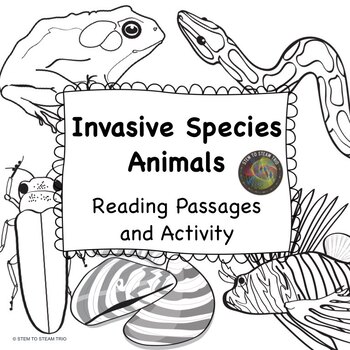
Invasive Species Nonfiction Texts and Activities in Black and White
This resource contains five non-fiction texts about animals that are considered invasive species. It was made for the MS-LS2-4 and 5 Ecosystems: Interactions, Energy, and Dynamics NGSS. It covers the following invasive species:Burmese PythonCane ToadEmerald Ash BorerLionfishZebra MusselThere are graphic organizers to fill in as the students are reading.❤️Click Here to Follow Us!Related Resources⭐ Invasive Species - Animals NGSS: MS-LS2-4 and MS-LS2-5 in Color⭐ Middle School NGSS Checklist⭐ Back
Grades:
6th - 8th
CCSS:
NGSS:
MS-LS2-5
, MS-LS2-4
Also included in: Science Sub Plans Endangered and Invasive Species Bundle MS-LS2-4 and 5

El Niño and La Niña - Causes & Impacts
In this worksheet about El Niño and La Niña, students develop their understanding about the following key concepts:Climate patterns: Students learn that El Niño and La Niña are natural climate patterns that occur in the Pacific Ocean, affecting global weather patterns and climate conditions.Ocean temperature: Students learn that El Niño is characterized by unusually warm ocean temperatures, while La Niña is characterized by unusually cool ocean temperatures in the central and eastern Pacific.Oce
Subjects:
Grades:
7th - 12th
Types:
CCSS:
NGSS:
MS-ESS2-6
, MS-ESS2-5
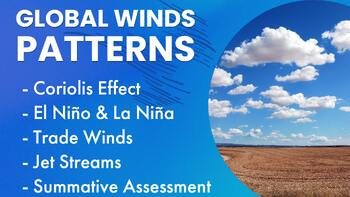
Global Wind Patterns
What's it about?In this activity, students are introduced to the factors that influence global wind patterns, including:The Coriolis EffectMajor Wind BeltsTrade WindsJet StreamsEl Niño and La NiñaAfter reading through the passages, students complete 10 review and research questions. The Answer key is provided.Additionally, students can complete a 15 question multiple choice assessment about the key concepts covered about global wind patterns.Feel free to check out my environmental science case s
Subjects:
Grades:
7th - 12th
Types:
CCSS:
NGSS:
MS-ESS2-6
, MS-ESS2-5
Also included in: Weather & Atmosphere Bundle - Printables, Research, Answer Keys
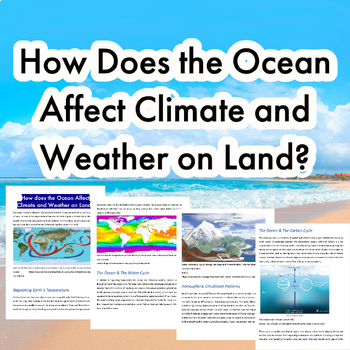
The Ocean´s Impact on Climate and Weather - Reading, Worksheet & Answers
A fun and engaging reading where students develop their understanding about the role that oceanic circulation has on weather patterns and temperatures on land. After reading and discussion, students finish the 10 review and research questions . Answers included.Key concepts and skills developed include:Oceans regulate Earth´s temperatureThe Role of the ocean in the water cycle and climateOceanic and atmospheric circulation pattersThe ocean as a carbon sink and the carbon cycleResearch skills*Per
Subjects:
Grades:
9th - 12th
Types:
CCSS:
NGSS:
MS-ESS2-6
, MS-ESS2-5
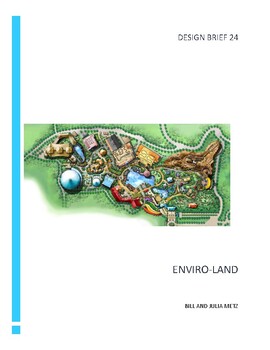
ENVIRO LAND - A DESIGN BRIEF
This design brief was developed as a general engineering brief but can be used for a variety of other purposes. For example, some students at the middle school level may still have difficulty in creating an overhead projection and as a result may have difficulty in reading and interpreting maps. An activity like this could prove helpful in identifying these students. Enviro-Land might also be used to reinforce the environmental issues the students have been studying as well as a venue for puttin
Subjects:
Grades:
6th - 9th
Types:
CCSS:
NGSS:
HS-ETS1-2
, HS-ETS1-3
, MS-LS2-1
, MS-ETS1-1
, HS-ETS1-1
Also included in: ENVIRONMENTAL SCIENCE DESIGN BRIEFS
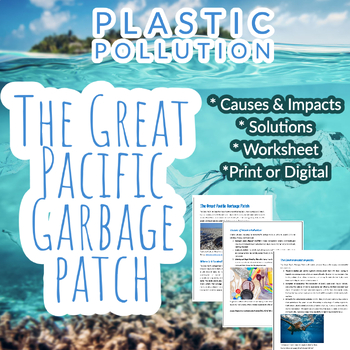
Plastic Pollution Case Study - The Great Pacific Garbage Patch
Are your students learning about plastic pollution? The great pacific garbage patch is an excellent example of how single-use plastics can remain in the environment over a long time period and have negative consequences on the environment and the organisms within it. Students complete the reading passages about the causes, impacts and solutions and complete review questions and conduct further research that connect the garbage patch to other key concepts environmental issues.Key concepts include
Subjects:
Grades:
7th - 12th
Types:
CCSS:
NGSS:
MS-ESS3-4
, MS-ESS3-3
, HS-ESS3-4
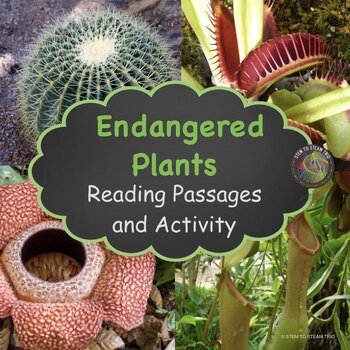
Endangered Plants Nonfiction Text for Reading Comprehension and Activity
This resource contains five non-fiction text about endangered plants. It was made for the MS-LS2-4 and 5 Ecosystems: Interactions, Energy, and Dynamics NGSS. It covers the following endangered plant species:Georgia AsterGolden Barrel CactusGreen Pitcher PlantRafflesiaVenus Fly TrapThere are graphic organizers to fill in as the students are reading. There is a link to a video, as well as a couple of other suggestions!❤️Click Here to Follow Us!Related Resources⭐ Endangered Plants: NGSS: MS-LS2-4 a
Grades:
6th - 8th
CCSS:
NGSS:
MS-LS2-5
, MS-LS2-4
Also included in: Science Sub Plans Endangered and Invasive Species Bundle MS-LS2-4 and 5
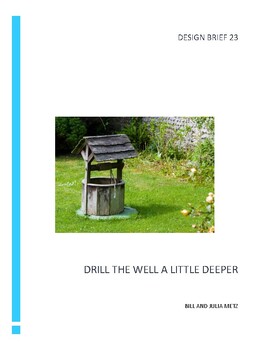
DRILL THE WELL A LITTLE DEEPER - A DESIGN BRIEF
This challenge was designed to complement an environmental program that includes the conservation of natural resources. This design brief does not require the students to have prior knowledge but will provide an opportunity for the students to research water conservation practices and devices and to collect data regarding their own water usage. If the specificity of the water conservation device is determined ahead of time by the teacher, this activity could also be used as a physical science le
Subjects:
Grades:
6th - 9th
Types:
CCSS:
NGSS:
MS-ESS3-1
, HS-ETS1-2
, HS-ESS3-1
, MS-ETS1-1
, MS-ESS3-3
...
Also included in: ENVIRONMENTAL SCIENCE DESIGN BRIEFS
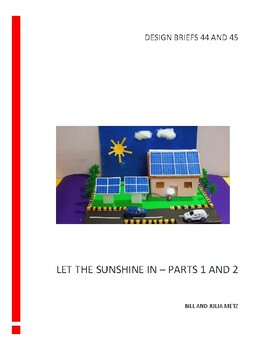
LET THE SUNHINE IN - 2 DESIGN BRIEFS
This design brief is an application of heat transfer through the process of radiation and or a combination of radiation and conduction, specifically in designing and building solar houses.
Subjects:
Grades:
6th - 11th
Types:
CCSS:
NGSS:
HS-ETS1-2
, HS-ETS1-3
, HS-PS3-1
, HS-PS3-3
, HS-ETS1-1
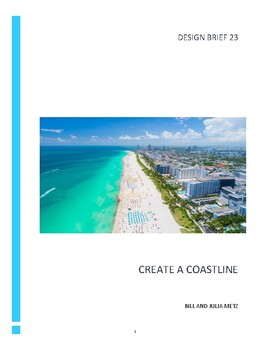
CREATE A COASTLINE - A DESIGN BRIEF
This design brief was written as an application lesson to accompany an environmental studies unit and addresses appropriate land use and human impact.
Subjects:
Grades:
6th - 10th
Types:
CCSS:
NGSS:
MS-ESS3-2
, HS-ETS1-2
, MS-LS2-3
, HS-ETS1-3
, HS-ESS3-2
...
Also included in: ENVIRONMENTAL SCIENCE DESIGN BRIEFS

Causes and Impacts of Coral Bleaching WebQuest
Get your students exploring the causes, impacts and solutions of coral bleaching in this WebQuest. Students are provided with five tasks to research information about the key concepts related to coral bleaching. Extension questions provided for early finishers, as well as the answer key.Key ideas include:Understanding coral reefsDiscovering coral bleachingClimate change and coral bleachingMitigating coral bleachingCase Study ResearchIf you are interested in Environmental Science Case Studies for
Subjects:
Grades:
7th - 12th
Types:
CCSS:
NGSS:
MS-ESS3-2
, HS-ESS3-1
, MS-ESS3-4
, MS-ESS3-3
, HS-ESS3-4
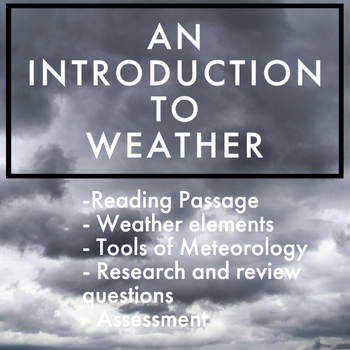
An Introduction to Weather
What's it about?In this introductory lesson to weather, students develop their knowledge about the following key ideas:Weather is the condition of the atmosphere at a particular time and place.Meteorology is the study of weather and meteorologists use different tools to measure and monitor weather elements.Understanding weather patterns is important for different fields such as agriculture, transportation, disaster management, and public health.Weather and climate are related concepts, but clima
Subjects:
Grades:
7th - 10th
Types:
CCSS:
NGSS:
MS-ESS2-5
Also included in: Weather & Atmosphere Bundle - Printables, Research, Answer Keys

Causes and Impacts of Soil Pollution Environmental Science Middle School
Have your students learn about how soil can become polluted through the process of pollution and erosion. They discover the variety of impacts that soil pollution can have on ecosystems and farming, as well as the solutions that can be put in place to reduce this environmental issue.Students complete the reading and then respond to the review questions. EXTENSION ACTIVITY: A case study about soil degradation in Shandong, China.Answer key included.KEY CONCEPTS IN THIS WORKSHEET:The importance of
Subjects:
Grades:
7th - 12th
Types:
CCSS:
NGSS:
MS-ESS3-4
, HS-ESS3-4
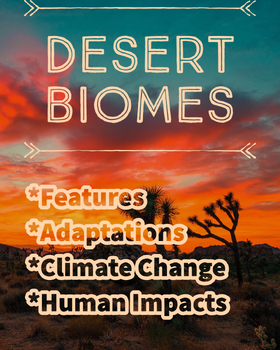
Desert Biomes: Characteristics, Adaptations, Climate Change & Humans
Spark student interest about desert biomes with this activity. Students learn about key concepts that help them understand these unique environments. They explore desert biomes, which are characterized by their dry climate, little rainfall, extreme temperatures, and sparse vegetation. They discover how plants in deserts have adapted to survive, with features like reduced leaves, needle-like structures, and the ability to store water. Students also learn about the adaptations of desert animals, s
Subjects:
Grades:
6th - 12th
Types:
CCSS:
NGSS:
MS-LS2-2
, MS-LS2-1
, HS-ESS3-1
, HS-LS2-6
Also included in: Biomes & Ecosystems Resource Bundle - PPTs, Printables, Assessment
Showing 1-24 of 45 results





